How to Cycle Sleep Supplements for Maximum Effectiveness
Introduction
Getting better sleep isn’t just about finding the right supplements—it’s about using them strategically. Even the best ingredients can lose their edge over time if you don’t give your body a break. That’s where cycling comes in: a method that helps maintain sensitivity, prevent tolerance, and maximize long-term results.
In this guide, you’ll learn how to cycle sleep supplements effectively, which ingredients need breaks, how long to rest between cycles, and how to combine natural strategies like breathwork and therapy to support your body’s sleep rhythm naturally.
Looking for supplements for This? Click here.
🧠 Why Cycling Sleep Supplements Matters
Most supplements influence neurotransmitters such as GABA, serotonin, and melatonin—the same chemicals that control sleep-wake balance. When you use them daily, your brain may adapt by reducing its own natural production or receptor sensitivity.
This leads to:
⚖️ Tolerance (they stop working as well)
💤 Dependence (you can’t sleep without them)
😴 Morning grogginess (from residual sedative effects)
Cycling helps you:
✅ Keep your receptors responsive
✅ Reduce dependency risk
✅ Optimize results for the long term
Think of it like a fitness program—your muscles need rest days, and so does your nervous system.
🌿 Common Sleep Supplements and How to Cycle Them
Let’s break down the most popular sleep aids and how to use them strategically.
🌙 Melatonin — The Circadian Clock Resetter
What it does:
Melatonin is your body’s “darkness hormone.” It helps signal bedtime and reset circadian rhythms, especially during jet lag or shift work.
Why to cycle:
When used continuously, your pineal gland may reduce its natural production. Over time, higher doses stop being more effective.
Cycling strategy:
🕐 Use for 2–3 weeks, then take a 1-week break.
Save for travel, night-shift recovery, or sleep onset struggles.
Use 0.3–1 mg instead of megadoses (less is often more).
Pro tip: Combine melatonin with glycine or L-theanine for synergistic calm.
🪷 Magnesium Glycinate — The Nervous System Relaxer
What it does:
Supports GABA activity, reduces muscle tension, and promotes deep slow-wave sleep.
Why to cycle:
Magnesium doesn’t require strict cycling—it’s an essential mineral. But rotating the form can keep results optimal.
Cycling strategy:
Alternate glycinate (calming) with threonate (brain-focused) every 6–8 weeks.
If taken daily, ensure adequate hydration and mineral balance (especially calcium and potassium).
Pro tip: Combine with taurine or vitamin B6 for enhanced GABA support.
🌼 Valerian Root — The Herbal Sedative
What it does:
Valerian enhances GABA signaling, promoting a tranquil, sleepy state.
Why to cycle:
Prolonged use can lead to diminished effects and mild dependence in sensitive individuals.
Cycling strategy:
Use nightly for 3 weeks, then rest for 1 week.
Best for short-term use during stressful phases or insomnia flares.
Pro tip: Rotate with passionflower or chamomile tea to maintain results.
🍃 L-Theanine — The Balanced Calm
What it does:
Promotes alpha brain waves associated with calm alertness. Great for anxiety-based insomnia.
Why to cycle:
L-Theanine rarely causes tolerance—but cycling can heighten sensitivity for focus and calm synergy.
Cycling strategy:
6 weeks on, 1 week off.
Can be taken in both morning (for anxiety) and evening (for relaxation).
Pro tip: Stack with magnesium and ashwagandha for nervous system harmony.
🌸 Glycine — The Temperature Regulator
What it does:
Lowers core body temperature and supports REM sleep.
Why to cycle:
Minimal risk of adaptation—safe for daily use. But cycling every few months keeps its efficiency noticeable.
Cycling strategy:
8–10 weeks on, 1–2 weeks off.
Combine with collagen for additional amino acid benefits.
Pro tip: Use 3 grams before bed in warm tea or water.
🌻 Ashwagandha — The Cortisol Calmer
What it does:
Balances the HPA axis and reduces evening cortisol levels.
Why to cycle:
Ashwagandha affects hormone balance (especially thyroid and cortisol), so long-term continuous use may dull its adaptogenic effects.
Cycling strategy:
Take for 8 weeks, rest 2–3 weeks.
Consider switching to Rhodiola or Holy Basil during breaks.
Pro tip: Best taken in the evening if your goal is relaxation or sleep support.
☕ GABA — The Deep Relaxation Neurotransmitter
What it does:
GABA inhibits neural excitation, helping your mind “turn off” at night.
Why to cycle:
Supplemental GABA can desensitize receptors if overused.
Cycling strategy:
Use as needed, not daily—ideally 4–5 nights per week max.
Take 100–250 mg before bed.
Pro tip: Combine with magnesium glycinate and L-theanine for enhanced calm.
🍵 5-HTP — The Serotonin Builder
What it does:
Boosts serotonin (and downstream melatonin) to improve sleep mood balance.
Why to cycle:
Chronic use can desensitize serotonin receptors or interact with SSRIs.
Cycling strategy:
Use for 4 weeks, then take 2 weeks off.
Don’t combine with antidepressants without medical supervision.
Pro tip: Pair with B6 (pyridoxal-5-phosphate) for conversion efficiency.
🪴 CBD or CBN — The Cannabinoid Sleep Regulators
What they do:
Interact with the endocannabinoid system to calm anxiety and reduce pain-related insomnia.
Why to cycle:
Your receptors (CB1/CB2) can become less responsive with continuous use.
Cycling strategy:
Take for 2–4 weeks, rest for 1–2 weeks.
Alternate with adaptogens during breaks for balance.
Pro tip: Combine small doses of CBD (for calm) with CBN (for sedation).
Looking for supplements for This? Click here.
🔁 How to Structure a Sleep Supplement Cycle
Here’s a sample 12-week plan that rotates ingredients for effectiveness and balance:
| Weeks | Focus | Supplements |
|---|---|---|
| 1–3 | Circadian reset | Melatonin + Magnesium Glycinate + L-Theanine |
| 4–6 | Deep relaxation | Valerian + Glycine + Ashwagandha |
| 7–9 | Stress modulation | Rhodiola + Magnesium Threonate + L-Theanine |
| 10–12 | Recovery & reset | Glycine + CBD/CBN (if used) + Adaptogenic tea |
After 12 weeks, rest for 1–2 weeks before starting a new rotation.
🌬️ Enhancing Results with Breathwork

Supplements can help you sleep—but breathwork trains your nervous system to do it naturally.
Try this before bed:
The 4-7-8 method 🌙
Inhale through the nose for 4 seconds
Hold for 7 seconds
Exhale through the mouth for 8 seconds
Repeat 4–6 times
This increases vagal tone, lowers heart rate, and boosts melatonin naturally.
Pair it with magnesium glycinate or GABA for synergistic calm.
Want to try Breathwork? Click Here.
🧘 Therapy and Sleep Regulation
🧩 CBT-I (Cognitive Behavioral Therapy for Insomnia)
Helps you reframe “I can’t sleep” thoughts into more neutral beliefs. Combine with short-term supplement use (like L-theanine or glycine) while building new sleep habits.
🌙 Somatic and Breath-Based Therapies
Trauma and chronic stress often show up as sleeplessness. Grounding techniques and body-based therapy restore a sense of internal safety—making supplements more effective.
💬 Journaling and Evening Reflection
Write down worries before bed. Pair this with calming teas or ashwagandha to ease mental load.
Looking for online therapy ? Click Here.
🧩 Signs You Should Take a Break
You need higher doses to get the same results.
You wake up groggy or foggy despite “sleeping well.”
You feel anxious when skipping a dose.
You’ve been using multiple sedatives at once.
If you recognize these signs, stop for 1–2 weeks. Support your break with non-supplemental rituals like meditation, hot baths, or aromatherapy.
🔬 How Long to Rest Between Cycles
| Supplement Type | Example | Rest Duration |
|---|---|---|
| Hormonal | Melatonin, 5-HTP | 1–2 weeks |
| Adaptogenic | Ashwagandha, Rhodiola | 2–3 weeks |
| Herbal Sedatives | Valerian, Passionflower | 1 week |
| Minerals/Amino Acids | Magnesium, Glycine | Minimal or none |
| Cannabinoids | CBD, CBN | 1–2 weeks |
Rotating helps the brain re-sensitize to calming effects naturally.
🌿 Building a Long-Term Sleep Support Stack
To maintain balance year-round, divide supplements into three tiers:
🛏️ Daily Foundations
Magnesium Glycinate
Glycine
L-Theanine
🌙 Phase Boosters (cycled)
Melatonin
Ashwagandha
Valerian
⚡ Emergency Support (as needed)
GABA
CBD/CBN
5-HTP
By alternating these intelligently, you create a responsive nervous system—one that can handle stress, relax naturally, and recover faster.
🧠 The Role of Diet and Lifestyle
Supplements are only half the equation. To make cycles effective, support your body with:
🥦 Tryptophan-rich foods: turkey, eggs, pumpkin seeds
🌞 Daylight exposure: helps regulate melatonin production
💧 Hydration: electrolyte balance supports sleep hormones
🧘 Mind-body practices: yoga nidra or gentle stretching enhance parasympathetic activation
❤️ The Takeaway: Sleep Smarter, Not Harder
Cycling sleep supplements helps you stay in tune with your body instead of overriding it. Rather than chasing stronger sedatives, build a rotation that honors your brain’s natural rhythm.
By combining supplements, breathwork, and therapeutic support, you can experience deep, restorative sleep without burnout or dependency.
Your body isn’t meant to rely on pills forever—it’s meant to remember how to rest. 🌙✨
📚 References
Arendt, J. (2018). Melatonin and circadian rhythm regulation. Sleep Medicine Reviews, 39, 1–17.
Boyle, N. B., et al. (2017). Magnesium supplementation and sleep quality: A review. Nutrients, 9(9), 997.
Chandrasekhar, K. et al. (2012). Ashwagandha root extract reduces stress and improves sleep. Indian Journal of Psychological Medicine, 34(3), 255–262.
Goel, N., Basner, M., Rao, H., & Dinges, D. (2013). Circadian rhythms, sleep deprivation, and human performance. Progress in Molecular Biology and Translational Science, 119, 155–190.
Oken, B. S. et al. (2021). Mindfulness meditation and sleep quality. Sleep Health, 7(1), 7–18.
Porges, S. W. (2011). The Polyvagal Theory. Norton & Company.
Morin, C. M., & Benca, R. (2012). Chronic insomnia. The Lancet, 379(9821), 1129–1141.
Ferracioli-Oliveira, A. P. (2020). L-theanine and stress response. Journal of Functional Foods, 68, 103885.
Shibata, K. et al. (2014). Glycine ingestion improves subjective sleep quality. Sleep and Biological Rhythms, 12(2), 91–98.
Panossian, A., & Wikman, G. (2010). Adaptogens and stress response modulation. Pharmaceuticals, 3(1), 188–224.
Related Posts
-

Supplements to Stay Calm Before Public Speaking
Breathwork is one of the simplest yet most powerful tools for calming pre-performance stress 🌬️. By slowing and deepening your breathing, you lower cortisol, steady your heartbeat, and re-center your mind. Learn the science behind how controlled breathing activates your parasympathetic nervous system — helping you speak, perform, or focus with grounded confidence. 🌿
-
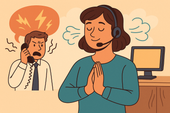
How to Handle Customer Service Stress Without Losing Your Cool 💬🧘♀️
Customer service can test even the calmest person’s patience. 😤 Learn how to handle difficult clients and daily pressure without losing your cool — through better mindset management, calming breathwork, and practical communication tools. Stay grounded, protect your energy, and transform stress into strength. 🌿
-
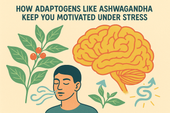
How Adaptogens Like Ashwagandha Keep You Motivated Under Stress
Feeling overwhelmed and unmotivated? 🌿 Discover how adaptogens like Ashwagandha can help you stay centered, focused, and energized under stress. Learn how supplements, breathwork, and therapy work together to restore your natural motivation and help you thrive — even during life’s toughest moments. 💪✨
-
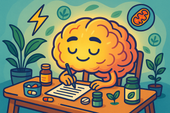
Supplements That Support Long-Term Productivity Without the Crash ⚡🌿
Cortisol — your body’s main stress hormone — can be both your best friend and worst enemy. ⚡ When balanced, it keeps you focused, energized, and ready to act. But when it stays high for too long, it leads to fatigue, anxiety, and emotional crashes. Learn how to regulate cortisol naturally through supplements, sleep, and stress management to maintain calm, steady productivity. 🌿
-
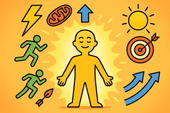
Why Energy Levels and Motivation Go Hand in Hand ⚡🧠
B-vitamins are the brain’s spark plugs 🔋. They turn food into fuel, support neurotransmitter production, and keep your mood, energy, and focus balanced. Learn how vitamins like B6, B9, and B12 work together to power the nervous system, reduce fatigue, and keep motivation high. 🌿
-
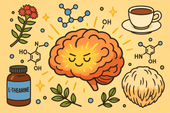
The Science of Motivation: Can Nootropics Help You Stay Focused? 🧠⚡
Nootropics are nature’s tools for sharper thinking and sustainable focus 🧠🌿. From Rhodiola and Lion’s Mane to L-theanine and Bacopa, these brain-boosting compounds enhance motivation, memory, and stress resilience. Learn the science behind how nootropics work — and how to use them safely for peak mental performance and clarity. ⚡
-
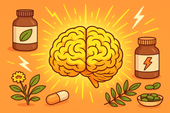
How Natural Supplements Can Boost Your Daily Drive
Cortisol is your body’s main stress hormone — powerful, necessary, but often misunderstood. ⚡ When balanced, it keeps you alert and energized; when chronically elevated, it drains mood, motivation, and focus. Learn how to regulate cortisol naturally through nutrition, supplements, and calming lifestyle habits for steady energy and emotional balance. 🌿
-
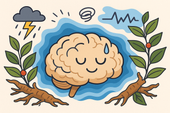
Ashwagandha for Stress and Low Mood
Breathwork is more than a relaxation tool — it’s a way to rewire your nervous system. 🌬️ Through intentional breathing, you can reduce stress hormones, improve focus, and calm emotional turbulence. This guide explores the science of breathwork and its powerful effects on mental clarity, resilience, and emotional regulation. 🌿
-
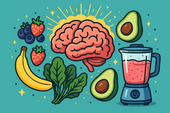
Mood-Boosting Smoothie Recipes
Your blood sugar affects far more than energy — it influences mood, focus, and emotional stability too 🍎. Learn how maintaining balanced glucose levels supports brain health, reduces anxiety, and prevents emotional crashes. Discover the foods and habits that keep your mind calm and your energy steady throughout the day. 🌿
-
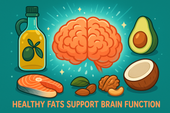
How Healthy Fats Support Brain Function
Your brain thrives on healthy fats 🧠💧. From omega-3s to MCTs, the right fats enhance focus, memory, and mood while protecting against inflammation and aging. This article explores how good fats — like those from olive oil, salmon, avocado, and nuts — build sharper thinking, emotional balance, and lasting brain vitality. 🌿
-
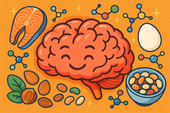
The Role of Protein in Mental Clarity
Protein isn’t just for muscles — it’s for your mind. 🧠 This guide explores how amino acids from high-quality protein fuel neurotransmitters, stabilize mood, and sharpen focus. Learn how balanced protein intake supports dopamine, serotonin, and energy regulation to boost mental clarity and emotional stability naturally. 🍳🌿
-
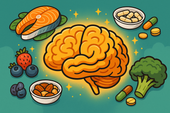
Nutrients That Support Emotional Stability
Your emotions are built from nutrients as much as from thoughts 🌿. This science-backed guide reveals the vitamins, minerals, and healthy fats that stabilize mood and reduce stress — from B-vitamins and magnesium to omega-3s and probiotics. Learn how balanced nutrition supports neurotransmitters, strengthens resilience, and promotes lasting calm and clarity 🧠✨.
-
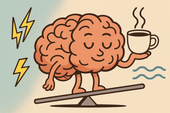
How Caffeine Affects Your Mood ☕
Your morning coffee might lift your spirits — but what’s really happening inside your brain? ☕ This in-depth guide explores how caffeine affects mood, motivation, dopamine, and stress. Learn how to enjoy caffeine mindfully without triggering anxiety, burnout, or emotional crashes. Discover the science behind your energy highs and lows — and how to find calm, sustainable focus. 🌿
-
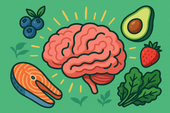
The Best Anti-Inflammatory Diet for Mental Health
Inflammation doesn’t just affect your body — it impacts your mood, focus, and emotional resilience too 🌿. This comprehensive guide reveals how an anti-inflammatory diet can support mental health by reducing neuroinflammation, balancing gut bacteria, and stabilizing blood sugar. Learn which foods to eat (and which to avoid) to protect your brain, boost serotonin, and promote lasting calm. 🧠✨
-

Why Sugar Spikes Can Worsen Depression
Sugar highs can make you feel good for a moment — but what comes next can fuel emotional crashes and deepen depression 🍭. This article explains how blood sugar spikes disrupt brain chemistry, increase inflammation, and destabilize serotonin. Learn how food, supplements, breathwork, and therapy can help you break the sugar–mood cycle and restore lasting emotional balance 🌿.
-
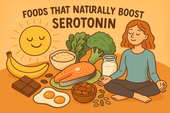
Foods That Naturally Boost Serotonin
Serotonin isn’t just a brain chemical — it’s your body’s built-in mood stabilizer 🌞. This in-depth guide explores how natural foods like salmon, eggs, bananas, and dark chocolate can elevate serotonin levels, while gut health, key nutrients, supplements, breathwork, and therapy create the perfect synergy for calm and emotional balance. Learn how to support your mind through diet, lifestyle, and mindset — naturally. 🌿
-
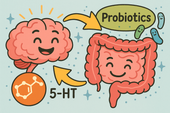
Probiotics for Mood Balance
-
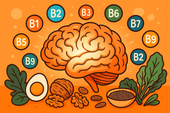
B-Vitamins and Their Role in Mental Health
Methylation is one of your body’s most important biochemical processes — influencing mood, energy, and focus. Powered by B-vitamins like B6, B9, and B12, it helps your brain create serotonin, detox efficiently, and maintain emotional balance. 🌿
-
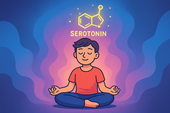
5-HTP for Serotonin Support
Calm isn’t just an emotion — it’s a physiological state where your body and mind finally sync in peace. By slowing your breath, softening your thoughts, and creating safety within, you restore the deep relaxation your nervous system craves. 🌿
-
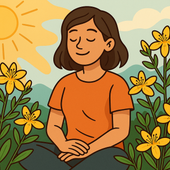
St. John’s Wort for Mild Depression
Antidepressants can be life-changing for many — but understanding how they work and what natural options like St. John’s Wort can complement them is key. Learn how both approaches affect brain chemistry, mood balance, and long-term emotional wellness. 🌿
-
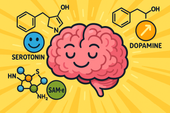
SAM-e: A Natural Mood Booster
Emotional regulation is the art of staying calm and grounded, even when life feels chaotic. By balancing your brain, body, and breath, you can respond with clarity instead of reacting from stress — building real emotional resilience and inner peace. 🌿
-

Rhodiola Rosea for Emotional Resilience
Neuroplasticity is your brain’s ability to grow, adapt, and heal — even after stress or trauma. Every thought, emotion, and habit reshapes your neural pathways, helping you build stronger emotional resilience, sharper focus, and lasting mental balance. 🌿
-
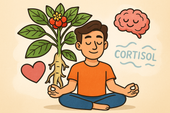
Ashwagandha for Stress and Low Mood
Adaptogens are nature’s stress balancers — powerful herbs like ashwagandha, rhodiola, and reishi that help your body adapt to tension, fatigue, and change. By regulating cortisol and supporting your nervous system, they build calm focus and emotional resilience from the inside out. 🌙
-
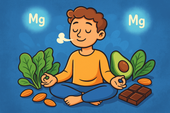
Magnesium’s Role in Emotional Regulation
Neuroscience helps us understand why we feel, think, and react the way we do. From brain chemistry and neural circuits to stress responses and emotional learning, the science of the brain reveals how our minds can heal, grow, and find balance. 🌿
-
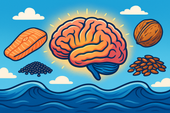
Omega-3 Fatty Acids and Emotional Well-Being
Nutrients aren’t just fuel — they’re communication signals that tell your brain and body how to function. From magnesium and vitamin D to omega-3s and B vitamins, the right mix of nutrients helps calm your mind, balance hormones, and support emotional and physical well-being. 🌙
-
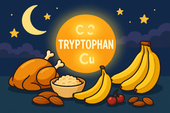
The Role of Tryptophan in Sleep Health
Mental health isn’t just the absence of illness — it’s the foundation of calm, focus, and emotional resilience. From managing stress and anxiety to nurturing self-compassion, understanding your mental well-being is the first step toward a balanced, more peaceful life. 🌿
-

Nutrients That Promote Nighttime Relaxation
Potassium does more than balance fluids — it also helps your body and mind relax at night. By calming nerves, reducing muscle tension, and supporting steady heart rhythm, potassium-rich foods like bananas, sweet potatoes, and coconut water can promote deeper, more restful sleep. 🌙
-

Sleep-Friendly Smoothie Recipes
Melatonin is your body’s natural sleep signal — a hormone that tells your brain when it’s time to rest. Learn how melatonin works, which foods and habits boost its production, and how to use it wisely for deeper, more restorative sleep without dependence. 💤
-
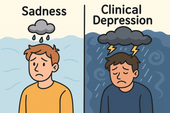
The Difference Between Sadness and Clinical Depression
Your emotions aren’t just in your mind — they’re written in your brain chemistry. Serotonin, dopamine, and GABA work together to regulate mood, motivation, and calm. When they fall out of balance, you may feel anxious, fatigued, or low. Learn how these brain chemicals influence your mental health and what you can do to restore harmony naturally. 🌿
-
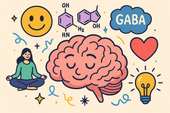
How Brain Chemistry Influences Mood
Your brain is a symphony of neurotransmitters — serotonin, dopamine, GABA, and more — working together to shape how you think and feel. When they’re balanced, you experience calm focus and emotional stability. When they’re not, mood swings and fatigue can follow. Learn how to naturally support these vital messengers for better mood and mental clarity. 🌿
-
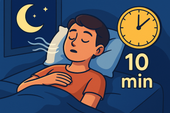
How to Fall Asleep in Under 10 Minutes
The military knows a few secrets about falling asleep fast — and they work even in chaos. This article explores the science behind rapid relaxation, including the famous “Military Sleep Method,” which teaches your body to shut down stress and rest on command. Learn how discipline, breath, and focus can help anyone fall asleep in minutes. 🌙
-
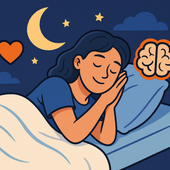
Why Emotional Resilience Improves Sleep
Emotional resilience isn’t just about mental strength—it’s also a key ingredient for better sleep. When your emotions are balanced, your body releases fewer stress hormones, your mind quiets faster, and your sleep becomes deeper and more restorative. Learn how to cultivate calm through mindset, breathwork, and daily habits. 🌙
-
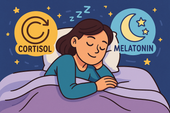
The Connection Between Stress Hormones and Sleep
Chronic stress can quietly reshape your body’s chemistry, raising cortisol, disrupting sleep, and draining your energy. This guide explores how long-term stress affects your nervous system, hormones, and rest—and how to restore calm through breathwork, nutrition, and daily recovery rituals. 🌿
-
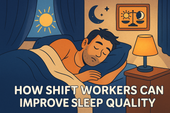
How Shift Workers Can Improve Sleep Quality
For shift workers, caffeine can be both a lifeline and a sleep disruptor. Learn how to use it strategically—boosting alertness during work hours without sabotaging rest. This guide explores timing, dosage, and smarter natural alternatives to keep your energy steady and your sleep restorative. 🌙
-
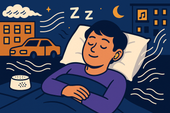
How to Sleep Better in a Noisy Environment
Living in a noisy area doesn’t mean sacrificing your rest. Learn practical and natural strategies to sleep better in loud environments—from using sound masking and breathwork to creating calming rituals that help your brain tune out the chaos. Find inner silence even when the world outside won’t quiet down. 🌙
-
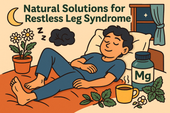
Natural Solutions for Restless Leg Syndrome (RLS)
Struggling to sleep deeply and wake refreshed? This soothing guide explores how the body restores itself during quality sleep—and how to support it naturally. Learn about the science of rest, the role of nutrients, and the rituals that promote deep, uninterrupted slumber. 🌙
-
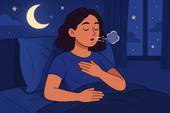
How to Overcome Middle-of-the-Night Anxiety
Middle-of-the-night anxiety can make even the calmest mind spiral into worry. This guide reveals practical, evidence-based techniques to help you stop the 3 A.M. overthinking loop—from breathwork and journaling to herbal supplements and therapy-based tools. Learn to retrain your nervous system and find peace when the world is asleep. 🌙
-

The Perfect Evening Herbal Blend
Discover the calming power of nature in your teacup. The perfect evening herbal blend combines chamomile, lemon balm, lavender, and adaptogens like ashwagandha to relax your body and quiet your mind before bed. Learn how to craft and customize a soothing, sleep-enhancing tea ritual that helps you unwind, restore, and wake up refreshed. 🌙
-
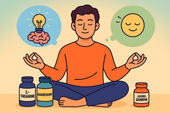
The Best Supplements for Both Relaxation and Focus
Calm your mind and sharpen your focus with the perfect blend of natural supplements. From L-theanine and magnesium to Rhodiola and Lion’s Mane, this science-based guide shows how to achieve relaxation and clarity at the same time. Discover stacks that support your nervous system, balance mood, and keep your mind laser-focused without the crash. 🌿
-
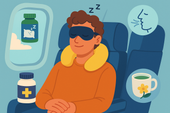
How to Sleep Better During Travel
Traveling can be thrilling—but sleepless nights can ruin even the best trips. From supplements like magnesium and melatonin to soothing breathwork and therapy-based techniques, this guide shows you how to sleep deeply on planes, in hotels, or across time zones. Learn to calm your body, reset your circadian rhythm, and build rest rituals that work anywhere in the world 🌙
-
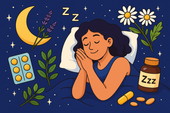
Improving Sleep in Menopause with Supplements
Menopause can make peaceful sleep feel impossible — but balance is within reach 🌿. This article explores how supplements like magnesium, ashwagandha, and black cohosh can ease night sweats, calm the mind, and restore your natural sleep rhythm during hormonal changes.
-
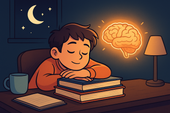
Sleep Support for Students During Exams
Exam stress can make it hard to rest — but sleep is what helps you perform your best 💤. This article explains how to improve sleep quality during exams through better study habits, natural supplements, breathwork, and therapy tools to calm the mind and sharpen focus.
-

Rest Strategies for Entrepreneurs
Entrepreneurs often burn out chasing their vision — but rest is the real fuel for success 🌙. This article explores science-backed recovery strategies for founders, including sleep, breathwork, therapy, and nutrition techniques that sharpen creativity and sustain performance.
-

How Sleep Affects Athletic Recovery
Sleep is where strength is built. 💤 This article explores how deep sleep drives muscle recovery, hormonal balance, and athletic performance — plus how supplements like magnesium, melatonin, and ashwagandha can enhance overnight repair and boost training results.
-

Better Sleep for People with Chronic Pain
Living with chronic pain makes sleep feel impossible — but it’s not. 🌙 This article explores how pain disrupts rest and how to rebuild your sleep through gentle breathwork, calming nutrition, therapy, and supplements that help your body relax and heal.
-

How to Sleep Better During Seasonal Changes
Seasonal shifts can throw your sleep off balance 🌦️. This article explains how light, temperature, and hormones change with the seasons — and how to restore your rhythm naturally through melatonin-supportive foods, breathwork, and therapy for emotional balance.
-

Foods That Naturally Boost Melatonin
Want to fall asleep faster without supplements? 🌙 This article explores how foods like tart cherries, pistachios, and kiwi naturally boost melatonin, the hormone that regulates sleep. Learn how to build an evening meal plan — plus simple rituals like breathwork and herbal tea — to improve rest and reset your circadian rhythm.
-

The Role of Herbal Tea in Relaxation
Herbal tea is more than comfort in a cup 🍵 — it’s nature’s gentle way to calm the mind and relax the body. This article explores how teas like chamomile, lavender, and lemon balm support stress relief, sleep quality, and emotional balance — plus how to pair them with magnesium, breathwork, and mindful rituals for deeper peace.
-

Lavender Extract and Its Calming Effects
Lavender extract is one of nature’s most soothing remedies 🌸. This article explores how lavender calms the nervous system, lowers cortisol, and improves sleep — plus how to combine it with magnesium, breathwork, and therapy for deep relaxation and emotional balance.

















































